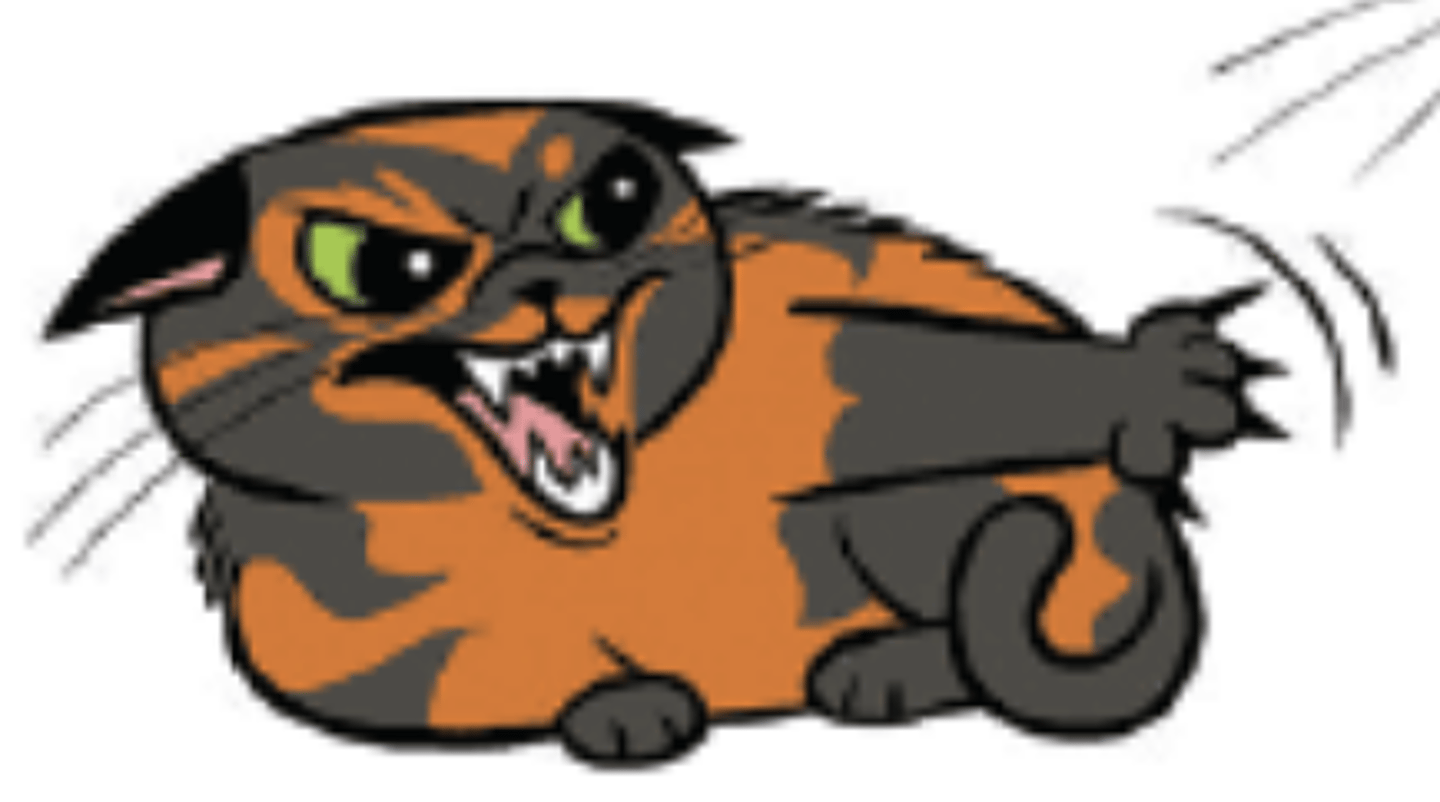Small Animal Handling and Restraint
1/29
There's no tags or description
Looks like no tags are added yet.
Name | Mastery | Learn | Test | Matching | Spaced |
|---|
No study sessions yet.
30 Terms
According to the AVMA, one should use the ____________ restraint required for the ____________ amount of time necessary.
- Least
- Minimum
What percentage of dogs and cats show fearful behavior in clinic?
- 55-80%
What is FAS?
- Fear, Anxiety, or Stress (FAS) score
__________ or __________ to physical restraint should always be considered such as positive reinforcement training, etc.
- Alternatives
- Adjuncts
What is the FAS score of this cat?
- 5

What are some things which can lead to an aggression/escape response?
- Fear
- Pain (i.e. geriatric patients w/osteoarthritis)
- Punishment
- Excessive physical contact
- Feeling threatened (i.e. by environment, personnel, equipment, or procedure)
What matters more, whether the animal finds an interaction threatening or whether the technician/doctor does?
- Whether the animal does
What are things to avoid doing with canine patients?
- Making direct eye contact
- Leaning over dog
- Reaching out over dog's head
How should one approach a fearful patient?
- Indirectly from the side as opposed to directly from the front
Good restraint has little to do with ________.
- Strength
According to Dr. Wong, when entering a room with a fearful patient, one can make it rain _________.
- Treats
Where should one not grip a dog during restraint?
- Do no grip dogs around the muzzle
How should one pick up a wiggly small patient, particularly dogs?
- Shorten leash, begin by grabbing the collar to gain control, pick up patient and hold the collar while the patient is held
What type of muzzle is preferred for canine patients and why?
- Basket muzzle
- Allows respiration, thermoregulation and visualization of oral cavity
If unable to muzzle a canine patient, what other options can be considered?
- Consider stuff E-collar or towels to remove visual stimuli
In canine patients, use the _______________ vein when possible.
- Jugular
Describe a proper cephalic vein blood collection restraint in a canine patient.
- Gently and securely guide the dog to a sitting position (sternal)
- Wrap an arm/towel around the dog's neck to prevent moving forward or reaching around
- Use other arm/hand to hold off vein
- If possible, have a head tapper/treat dispenser
Describe a proper jugular vein blood collection restraint in a canine patient.
- Ask a dog to sit, facing away from you with tail end near your feet
- Support the dog's back/butt
- Using both hands, gently cup sides of muzzle with thumbs toward ceiling and index fingers under the chin; other fingers can grasp the collar if necessary
- Gently lift the head
Describe proper recumbent restraint in canine patients.
- Begin in a restraining position with arm under the head/around the neck
- Slide patient down the handler's knees slowly by holding the legs closer to the handler.
Explain how to perform towel restraint on a small or brachycephalic patient.
- Roll the towel into a long tube and gently wrap it around the dog's neck. Hold the ends of the towel behind the dog's head so fingers are not within reach.
Does scruffing trigger relaxation in adult cats?
- No
What are four tools to use in feline restraint?
- Safety zones (beds/carriers)
- Burrito with a towel
- E-collars
- Feliway spray
In puppies and kittens, ______________ technique works best.
- Distraction
What should one do for puppies and kittens during their entire exam?
- Offer treats to every puppy and kitten during entire exam
What are two way to increase food motivation in patients?
1) Have the owner not feed breakfast/small breakfast before apt.
2) Offer small pieces of high-value treats to change emotional responses
Is it preferable for patients to be moved into rooms quickly or slowly?
How should one initiate an exam/approach a canine patient and feline patient?
- Canine: Approach from side and slowly
- Feline: Leave in carrier, allow them to come out on their own
What should one do before using a stethoscope, opthalmoscope, and otoscope?
- Let the patient smell these things first
When working with patients, keep touch ___________.
- Consistent
What device can one use for pediatric vaccines?
- Buzzy device